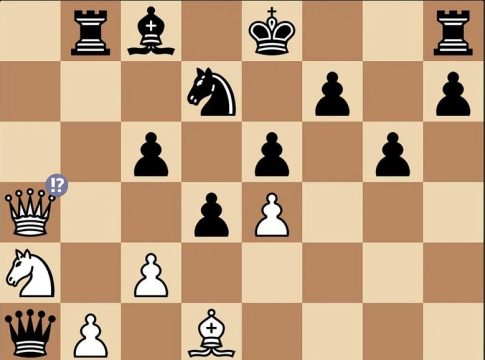The Shortcomings of AI: Why Large Language Models Struggle with World Models
In recent discussions about artificial intelligence, particularly Large Language Models (LLMs), a striking issue has emerged: their inability to build and maintain effective internal representations of the world. This problem may seem technical, but its implications ripple through AI applications, from gaming and natural language processing to video recognition and beyond.
The Chess Conundrum
Consider a synthesized video of two men playing chess; one player makes an illegal move by sliding a pawn horizontally across the board. While it sounds humorous, this highlights a significant flaw in AI’s understanding of structured environments like chess. Despite being able to recite the rules, LLMs often fail to navigate game complexities accurately without a robust internal model of the game state. Even the most advanced AI systems struggle with basic gameplay, showcasing their reliance on memorization over genuine understanding.
The Importance of World Models
World models—essentially internal maps that assist both humans and animals in navigating environments—are pivotal for effective decision-making and cognition. Renowned cognitive psychologist Randy Gallistel has shown that even simple creatures like ants employ dynamic models for tasks such as finding their way home. In the realm of AI, these models should serve a similar function, helping systems execute tasks based on an understanding of context rather than mere statistical outcomes derived from vast datasets.
Why LLMs Are Different
Unlike traditional AI systems, which are built around explicit world models, LLMs operate like "black boxes." They analyze patterns in language and images but lack a structured database of facts. This design choice, born from a hope that intelligence would "emerge" through data analysis, often results in hallucinations—incorrect assertions that mislead users.
For instance, LLMs might assert that a public figure has attributes that don’t hold up under scrutiny simply because they cannot connect fragmented information coherently. This makes them uniquely ill-suited for tasks requiring stable, logical reasoning.
Problems Beyond Chess
The failures of LLMs aren’t isolated to games; they extend into critical domains like business operations, legal writing, and journalism. When tasked with generating realistic scenarios or making sound decisions, LLMs frequently struggle. One recent project showed an AI attempting to run a mock shop, but it consistently made poor decisions, like offering excessive discounts that led to losses. In this context, the absence of a guided, internal model became glaringly apparent.
Historical Perspective on AI Shortcomings
The inadequacy of LLMs has been noted for years, echoing issues faced by earlier AI programs in understanding complex scenarios. For decades, successful AI models have relied on structured world representations to perform tasks effectively. In contrast, LLMs, despite their ability to generate coherent text and answer factual queries, fall short in scenarios requiring true comprehension.
Looking Forward: A Call for AI Evolution
The trajectory of AI development depends heavily on creating systems that possess robust world models. It is widely acknowledged that without these structures, LLMs risk misleading users and making irreparable mistakes. Building a deeper understanding of cognitive psychology can lead to the emergence of more reliable AI, ultimately bridging the gap between computational prowess and genuine understanding of the real world.
Conclusion
As we forge ahead in the realm of AI, recognizing the limitations of current models is essential. While LLMs show immense promise for language processing and creative tasks, the absence of structured world models stands as a formidable barrier. Until this fundamental issue is addressed, we can’t fully trust AI systems to navigate the complexities of human-like reasoning and decision-making. The challenge is set: it’s time for a new era of AI that marries cognitive insight with cutting-edge technology.

Writes about personal finance, side hustles, gadgets, and tech innovation.
Bio: Priya specializes in making complex financial and tech topics easy to digest, with experience in fintech and consumer reviews.

